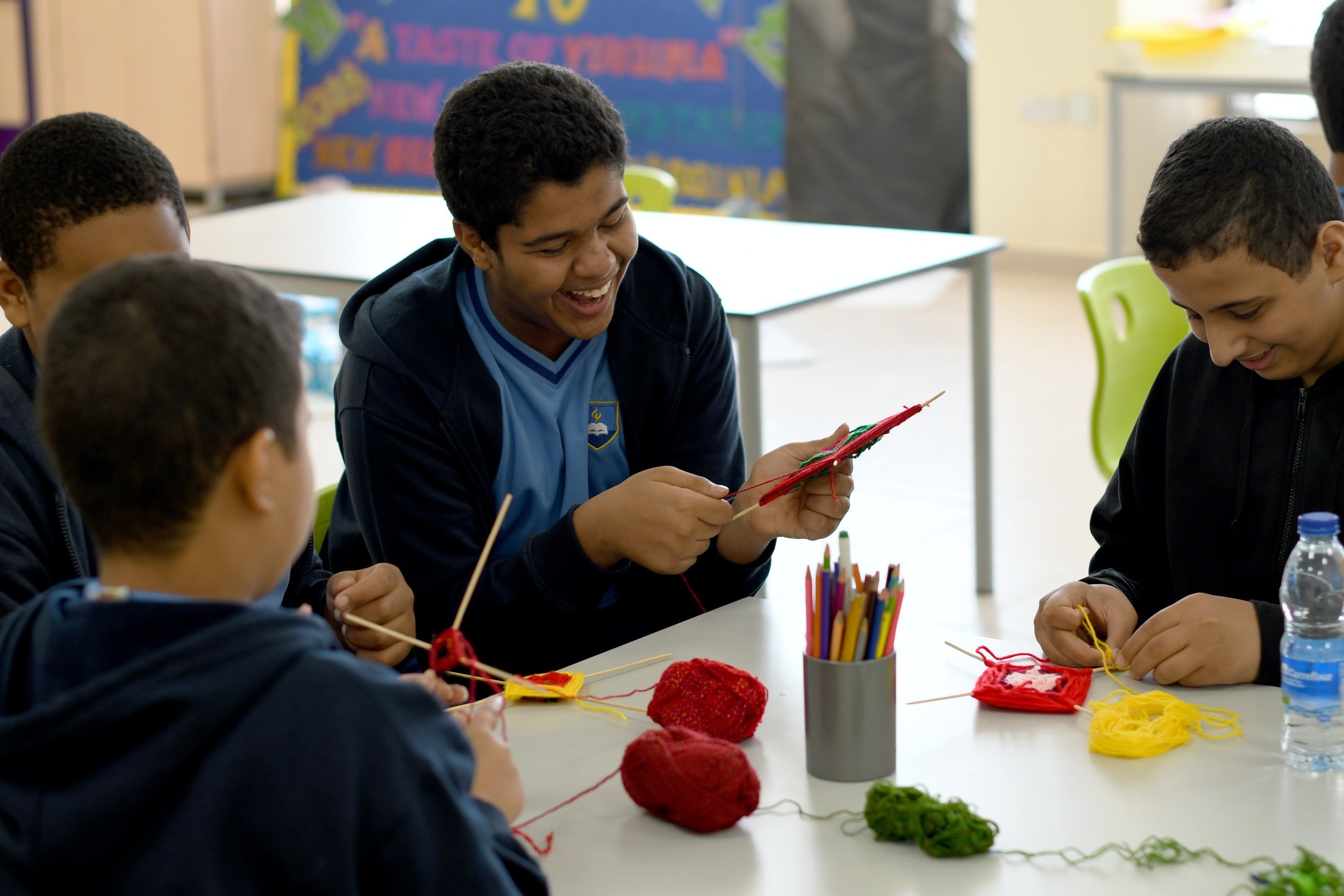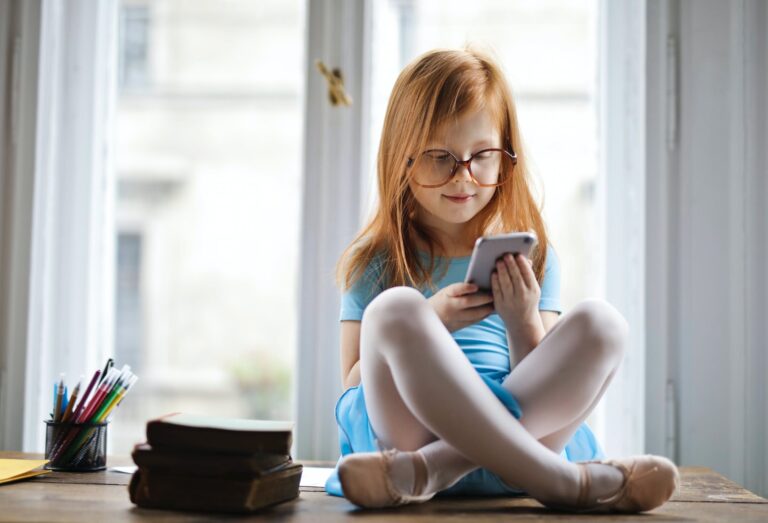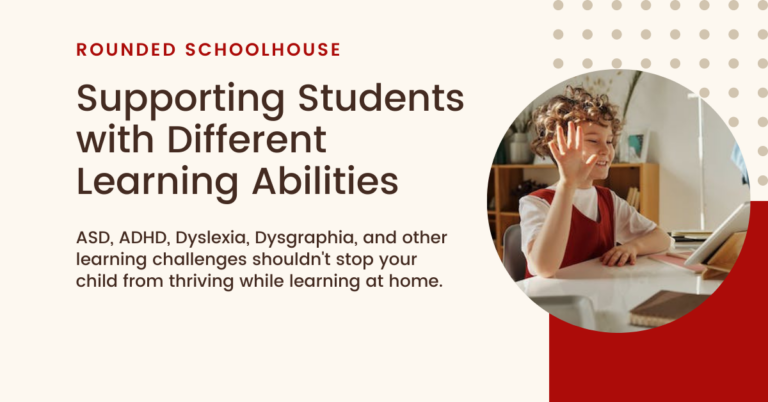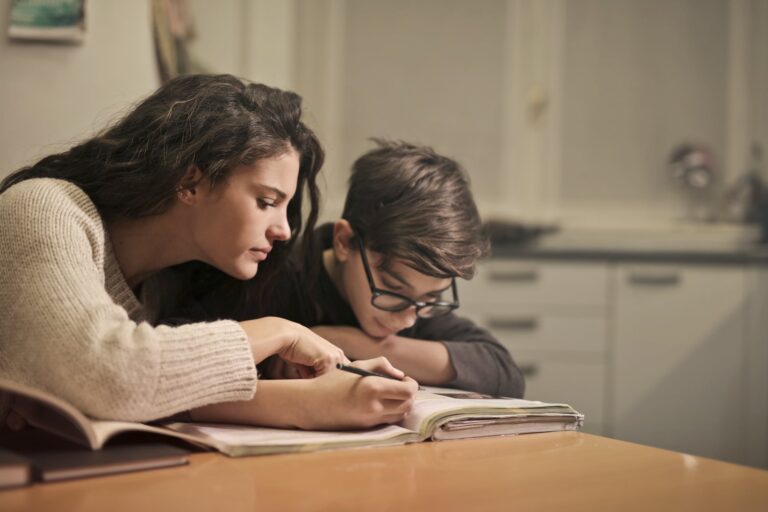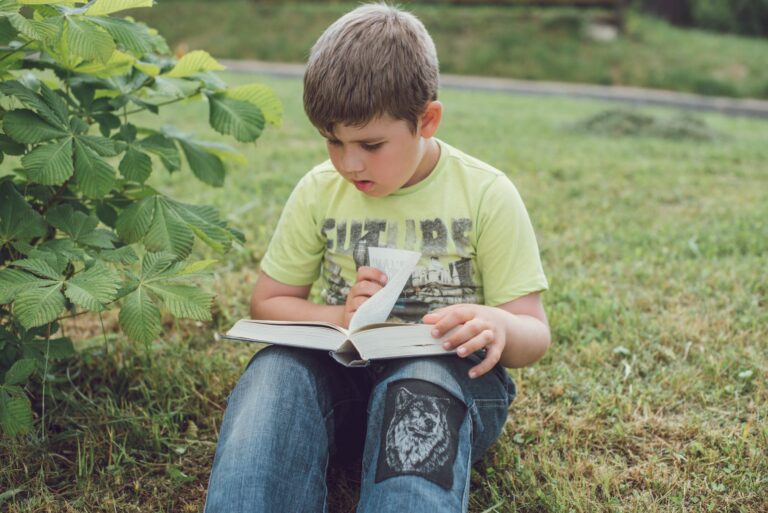Learning Styles, How They Work, and How Rounded Schoolhouse Supports Each One
One of the great challenges of homeschooling is providing a diverse approach for your child to experience every learning style on a regular basis. Most homeschool curricula are designed for one or two learning styles. They are often written worksheets, books, or spoken lectures.
Rounded Schoolhouse is designed specifically to help students experience all seven learning styles weekly. Learn more about our program.
————
God designed children to learn in so many unique and wonderful ways. You might have seen your child shine when they listen to a book versus reading it. Or maybe your child picked up math more quickly when they could use their hands instead of only writing down their work.
Those experiences are examples of learning styles at work.
The concept of learning styles, that people learn best in different ways, began in the 1970s and has been a point of contention for decades. While many studies have shown that children tend to enjoy learning in different ways, many more studies have debunked the myth that children only learn one way or another way.
In reality, learning styles change from child to child and from situation to situation. Every child can learn in every style, but some styles may be more enjoyable for learning than others. And in some situations or subjects, the student’s learning styles may change.
That’s because learning styles are fluid and can change based on subject, environment, teacher, and the student’s own mood or disposition.
Think about it like appetite. Your child may generally prefer chicken nuggets, but sometimes they want pizza. And sometimes they’ll eat broccoli with a smile! (Maybe wishful thinking, but butter works wonders…)
We’re going to look at all 7 learning styles. It’s helpful to know them. However, remember that these are interchangeable for the same child. Just like you vary and change your child’s diet from day to day, you should be working to keep your child’s learning styles varied, too. They should be approached more like a nutritious diet rather than a one-style-fits-all for how your child must learn at all times.
One more thing…we don’t consider anyone to be a certain type of learner. We don’t refer to “Auditory Learners” as if there is a child who only learns through listening. We refer to “Auditory Learning” as a style of learning that every child can experience and enjoy, but some children enjoy more and find more success with.
The Seven Learning Styles
1. Visual Spatial Learning
Visual learning is the experience of learning through visual observation. Visual aids help with this type of learning. For example, diagrams, videos, whiteboards, and illustrations can aid in visual spatial learning.
Rounded Schoolhouse is inherently visual in its approach to learning. With videos that include images, slide decks, whiteboards, and the visual presence of a teacher, visual learning is core to our approach.
2. Aural Auditory Learning
Auditory learning happens when someone learns through listening. This can be listening to a lecture or verbal presentation, an audiobook or book read aloud, or to music.
Rounded Schoolhouse incorporates auditory learning into every lesson with spoken word, music, or real-along books baked into every video module.
3. Verbal Linguistic Learning
Verbal learning happens when someone learns via the spoken or written word. This includes spoken lectures, narrated stories or parables, as well as written information or instructions.
Rounded Schoolhouse includes both written and spoken linguistic learning opportunities in every lesson. Each lesson includes a teacher presenting the information for the lesson as well as complimentary written instructions.
4. Physical Kinesthetic Learning
Kinesthetic learning is experienced through moving the body. This type of learning can happen through direct manipulation of physical items like when doing a science experiment. It can also happen through dance, tinkering, doing math with fingers and objects, or playing a physical game.
Rounded Schoolhouse includes dozens of DIY science projects that coincide with science curriculum as well as instructions for incorporating movement into math work to aid in grasping concepts.
5. Logical Mathematical Learning
Logical learning takes place for students when reasoning and numbers are present. Of course, most Math concepts appeal to logical learning experiences, but many Science, English, and even Social Studies topics lean on logic to help students learn new things.
Rounded Schoolhouse takes advantage of logical learning experiences through science experiments, math worksheets that require students to show their work, English assignments that push students to make sense of complex stories, and history lessons that ask students to connect events into meaningful timelines of cause and effect.
6. Social Interpersonal Learning
Social learning happens when students learn together with other students. Students who excel at social learning love group projects, discussions, brainstorming, and sharing ideas.
Rounded Schoolhouse capitalizes on social learning concepts through our daily group video calls with a teacher and other students their age. Through group games, debates, discussions, sharing, and more, students experience the best parts of social learning. Rounded Schoolhouse is the only online school that offers daily video classes like this.
7. Solitary Intrapersonal Learning
Solitary learning is the opposite of social learning. It happens alone, through self-study. Social learning and solitary learning are often paired together for incredible results. Preparing alone for their part in a group project is a classic example of solitary and social learning working together.
Rounded Schoolhouse is designed to be completed alone, with little-to-no help from an adult. This pushes students to find self-reliance and independence in their work while still providing timely help from our live-chat teacher support.

